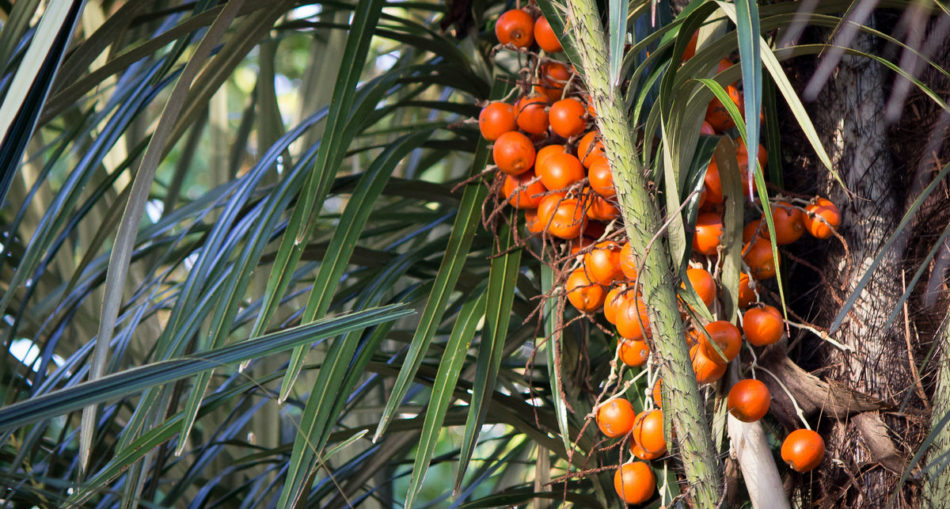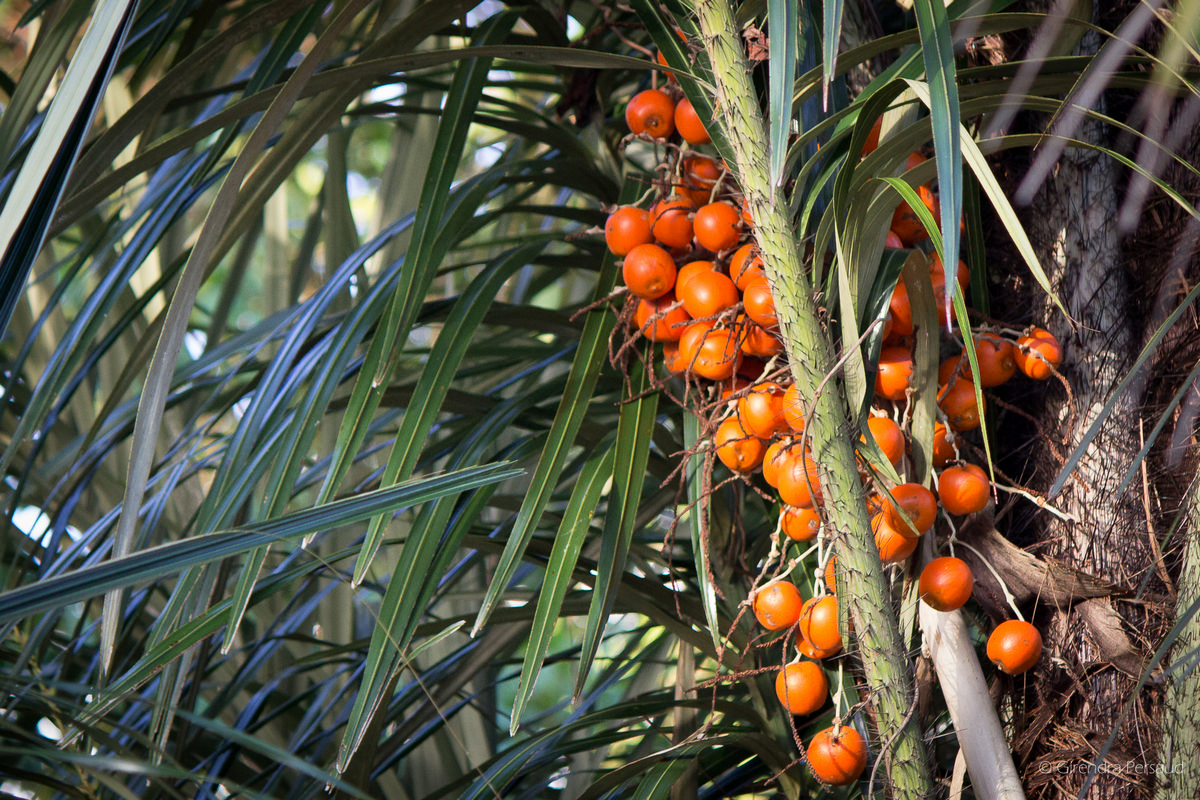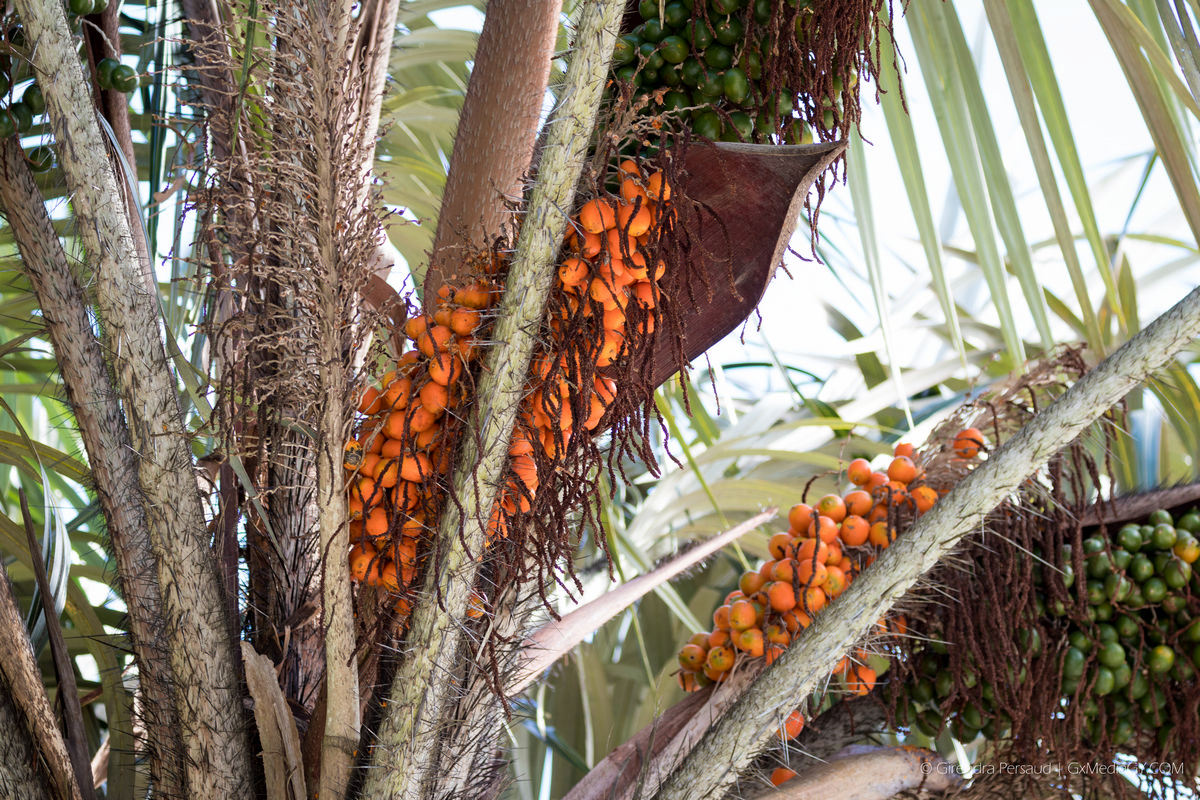The Awara Palm is perhaps most famous for its sweet, yellow-orange fruits- a favourite of many Guyanese. In Guyana, these palms tend to grow in sandy areas, and are typically found in groves. In some areas where the Awara tree is not naturally occurring, persons tend to plant the trees. The scientific name of the Awara Palm is Astrocaryum vulgare but the plant is known by several different names. In Guyana and French Guiana, it is known as wara, owara or awara and tucum or tucumã-do-Pará in Brazil, awarra in Suriname and chontilla in Ecuador. While oil can be obtained from the Awara Palm trees, the most commonly used part is the Awara fruit. Read on to find out about the many other uses of Astrocaryum vulgare.
Origin of the Awara Palm
Awara is a tropical palm tree that is native to the Amazon Rainforest. It can be found in South America, especially in French Guiana, Guyana and Brazil.
Description of the Awara Palm
The Awara Palm is an evergreen, feather palm. The Awara tree grows from ten to fifteen (10-15) meters in height. They are roughly ten to twenty (10-20) cm in diameter and are covered in black needles, reaching up to twenty-two (22) cm long. The Awara tree has a crown at the top with around six to eight (8-6) stiffly erect leaves. The fruit of the tree is typically oval and varies in size according to species. The colour of Awara fruits ranges from a yellow-orange to a bright orange in colour. The pulp of the fruit is usually the same colour as the skin. At the center of the fruit is a black woody core which contains a white almond paste. The fruits are juicy, high in Vitamin A and have a rich sweet flavour. Mature Awara trees can produce up to one hundred and ten (110) lbs of fruits per year.
Scientific Classification of the Awara Palm
- Kingdom: Plantae
- Clade: Tracheophytes
- Clade: Angiosperms
- Clade: Monocots
- Clade: Commelinids
- Order: Arecales
- Family: Arecaceae
- Genus: Astrocaryum
- Species: A. vulgare
Traditional Uses of the Awara Palm
- In the past, the seed of the Awara fruit was used by the indigenous people of the Amazons to make black rings, called Tucum Rings which were used first as symbols of marriage for the slaves and natives, who could not afford gold. These rings were later worn by Catholic missionaries to show support for the slaves and natives in their struggle for equality, freedom and human rights.
- The fibres from the unopened leaves can be used for weaving bags and hammocks.
Medicinal Uses of the Awara Palm
- Various parts of the Awara tree can be used locally for medicine. For example, the oil from the seed can be used as a laxative or to treat rheumatism and earache.
- A concoction of the roots can be used to treat furunculosis and syphilis.
- The pulp of the fruit can be used to treat coughs.
Edible Uses of the Awara Palm
- Many persons eat Awara fruits. They either use their teeth or use a knife to peel the skin off the fruit then cut the pulp away from the center core to eat. The pulp is then chewed to extract the rich juices. Whilst a majority of persons spit the fibres out after extracting the juices, there are quite a number of persons who swallow the fibres.
- At Easter in French Guiana, the Awara fruit is used to make Awara Broth.
- A juice produced from the immature endosperm called vino de tucuma can be used to make a drink or in cooking dishes.
- Wine can be made from the fermented sap of the spathe.
Interesting Tip
- Within three to four (3-4) days of ripening, the Awara fruit should be eaten or else it rots.
Other Uses of the Awara Palm
- Two types of oil can be produced from the Awara fruit – one from the external pulp and one form the white almond paste found in the middle of the woody core.
- The oil obtained from the fruit can be used to make soap.
- Durable, heavy, hard and very strong, the wood of the Awara tree can be used to make houses locally, whilst the stems can be used as poles for fences.
- The fruit of the Awara tree can be used for making biodiesel. It is resistant to diseases and its high productivity rate makes it cost-efficient in making biodiesel.
About the Awara Palm
The Awara Palm is hardy evergreen tree and has the ability to produce new shoots even after a fire. The plant is a part of Guyanese history since our indigenous people used them to made rings, to symbolize marriage between themselves and as well between the slaves. While the Awara Palms are most noted for their delicious yellow-orange fruits, they have numerous uses. The fruits are gathered underneath the trees or knocked off with a stick with a hook-like end, like a grass knife. After this, they are separated into parcels and sold at local markets. Remember to buy these sweet, fruits the next time you see them!
Article References
- https://en.wikipedia.org/wiki/Astrocaryum_vulgare
- http://tropical.theferns.info/viewtropical.php?id=Astrocaryum+vulgare
- https://pfaf.org/user/Plant.aspx?LatinName=Astrocaryum+vulgare
- https://www.naturalmedicinefacts.info/plant/astrocaryum-vulgare.html
- https://pfaf.org/user/Plant.aspx?LatinName=Astrocaryum+vulgare









